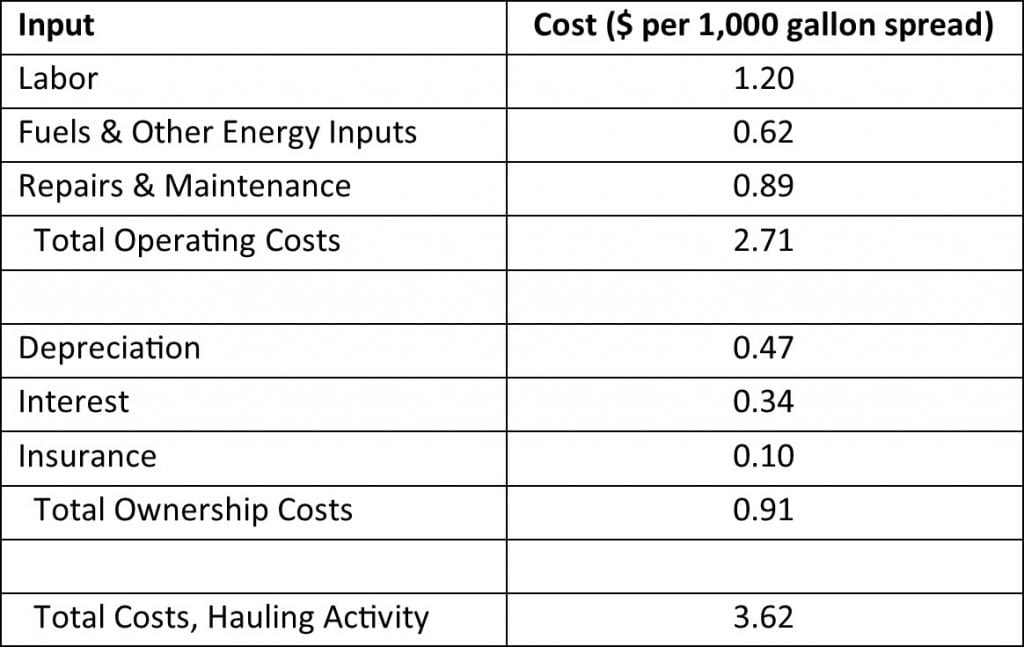by Jodi Letham and John Hanchar
Summary
- Assess the current market situation for inputs — for example, rising fertilizer prices and underlying availability concerns — by considering input output price ratios, and the production relationship between output and input levels.
- If evaluating livestock manure sources for possible ways to adapt to the current fertilizer situation – for example, rate, location, timing, and method changes — use current costs of manure management activities to evaluate alternatives.
- Identify and implement production and marketing (price) risk management practices to increase the likelihood of realizing production, harvest, product sold, and revenue expectations.
React to Input Price Relative to Output Price
Farm business owners face rising costs for inputs. Higher fertilizer prices and related availability concerns are notable. In response, owners will be reassessing input use decisions, making adjustments based upon their analyses.
From an economics perspective, a decision regarding optimal input use level depends upon input price relative to output price, and the relationship between output and additional units of the input. To maximize profit, economics of production concepts recommend using an input up to the point where the input output price ratio equals the marginal change in output resulting from an additional unit of the input.
Suppose the price per unit of Nitrogen (N), the input, is $0.41 per pound of N, and the price of corn grain (output) is $4.75 per bushel. This input output price ratio of 0.09 reflects roughly values from about a year ago. Given a corn grain nitrogen response function, the optimal value of N for this scenario is 141 pounds per acre with an expected yield of 236 bushels per acre (Ketterings). Suppose the price per unit of N is $0.82 per pound of N, and the price of corn grain is $7.45 per bushel. The input output price ratio of 0.11 reflects values reported by various sources to describe the current situation. Given a corn grain nitrogen response function, the optimal value of N for this scenario is 138 pounds per acre with an expected yield of 236 bushels per acre.
To learn more about a marginal product, input output price ratio based approach for decision making see https://blog-crop-news.extension.umn.edu/2021/03/why-corn-growers-shouldnt-overreact-to.html for an article by Brad Carlson, University of Minnesota Extension.
Updated Costs of Manure Management Practices
Due to livestock manures’ nutrient values, farm business owners might consider alternatives regarding manure rates, timings, location, and methods in response to today’s prices paid, prices received environment. Perhaps dairy farm operators will consider altering hauling and other practices. Perhaps cash grain operations will consider livestock manure as an alternative to manufactured fertilizers. Current manure application costs – for example, labor, fuels, machinery repairs and maintenance, and ownership costs — will aid decision making.
A manure application cost study in New York reported costs for various activities based upon a spring 2012 survey (Howland and Karszes). Costs associated with the hauling activity will likely be a key factor as decision makers evaluate changes in practices. To help with assessment and decision making, 2012 survey costs for the hauling activity have been updated to current, spring 2022 dollars (Table 1).
Table 1. Manure hauling activity costs by input (current dollars, spring 2022).

For analysis purposes, the following cost estimates based upon the above might be useful
- $1.03 per 1,000 gallons spread per mile to field, one way
- $0.11 per 1,000 gallons spread per minute travelled, round trip
Managing Production Risks
Farm business owners may look at past data and rely on strong relationships with trusted advisors to develop a smart risk management strategy for the year ahead. While many farmers focus on one or few input costs due to their traceability, producers are strongly advised to get a good grip on the total cost of production projections, including all fixed expenses. Once you have this information, consider some of these management strategies.
- Acquire updated soil analyses to determine which field require amendments.
- Directly incorporate/inject manure at planting or apply during the growing season to provide the most the most N from manure adjusting amendments where needed.
- Split applications of N (V4-V6) at the right time can help you save money on fertilizer. Remember to adjust your rates if application is delayed, because yield has already been compromised.
- Consider using enhance efficiency N sources when N losses are expected.
- Reevaluate pesticide programs and pest management methods (cultural, mechanical, biological) to maximize the likelihood of achieving production expectations.
- Repair headlands, reduce crop inputs or retire the headland from main crop farming. Reference: https://blogs.cornell.edu/whatscroppingup/2020/10/20/headlands-often-reduce-overall-field-yield-are-they-worth-fixing/
- Make use of available tools to determine where application savings could be made, for example, …. (Note to Jodi, suggestion: is there a tool that you would highlight?), e.g. would the last item on the list be an example?)
- Consider end-of-season management tools and learn by evaluation e.g. Corn Stalk Nitrogen Tests (CSNT).
Managing Marketing Risks
Producers may implement marketing risk management strategies to increase the likelihood of realizing expected prices, revenues and margins. If favorable opportunities are available, then use forward contracts, futures, price/yield/revenue insurances, and other market risk management tools to achieve the above.
References
Howland, Betsey and Jason Karszes. 2014. Manure Application Cost Study New York State Spring 2012. EB 2014-12. Ithaca, NY: Cornell University/College of Agriculture & Life Sciences/Dyson School of Applied Economics and Management. < http://publications.dyson.cornell.edu/outreach/extensionpdf/2014/Cornell-Dyson-eb1412.pdf>
Ketterings, Quirine (Cornell University/College of Agriculture & Life Sciences). 2022. Corn grain, Nitrogen; and corn silage, Nitrogen yield response functions with MERN (most economic rate of nitrogen) calculations. Personal communication, 2022-04-26.

